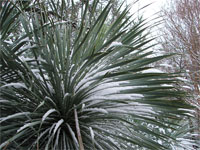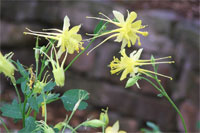Native Son – December, 2010
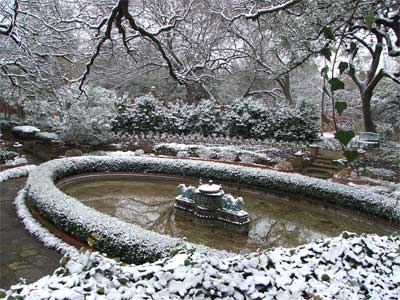
Winter settles over area surrounding the Dragon Fountain at Chandor Gardens in Weatherford. All photos by Steven Chamblee.
The Best Year Ever
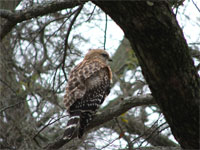
Red-shouldered hawk (Buteo lineatus)
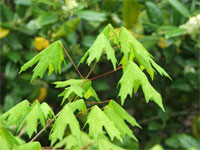
Southern sugar maple (Acer barbatum)
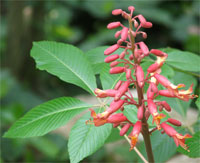
Red buckeye (Aesculus pavia)
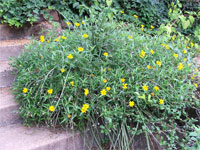
Zexmenia, tangled with a red yucca
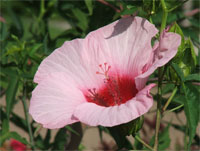
Lady Baltimore hibiscus
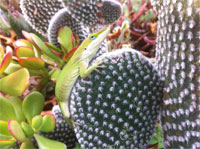
Anole (Anolis carolinensis) in the succulent collection
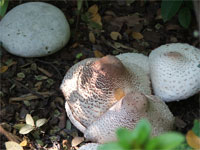
Mushrooms and rocks
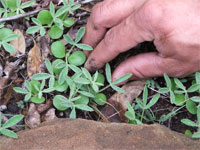
Baby bluebonnets (Lupinus texensis)

Bullgrass (Muhlenbergia emersleyi)
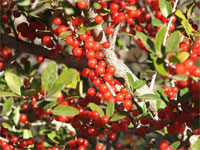
Yaupon holly (Ilex vomitoria)
It seems just a few days ago that I sat pondering the New Year and what it might bring. I thought to myself, “You know, this might just have been the best year ever.” Now that I look back, it probably was. Not that it was all rosy … I had my share of headache, heartache, and backache. Maybe I have just learned to cope with things a little better; maybe I have finally learned to truly heed my grandmother’s words: “Count your many blessings every day.”
For those of you who read this column every month, I know by now that you have settled back into your chair to prepare for one of my excessively indulgent essays (sorry about that … I’m even worse in person). Well, this time I felt like doing something a little different. Instead of the usual road trip, I’d like to keep the ol’ truck parked and let you peek at some native things happening through the year at Chandor Gardens.
January — The dreary winter days are often interrupted by our resident flying acrobat streaking through the canopy of naked trees. She finally stays still long enough for me to snap a photo, and my buddy, Roger Sanderson of the Heard Museum in McKinney, tells me we have a red-shouldered hawk (Buteo lineatus) in the garden. We never found a nest, and she was gone by mid-spring.
February — Snow blankets the garden, breaking some tree limbs and leveling many of the garden’s junipers. Luckily, most of the garden’s plants escaped damage, including the beaked yucca (Yucca rostrata). Donated to us by Mountain States Wholesale Nursery near Phoenix, these yuccas were some of the last specimens from the original crop at MSWN, sown from seed in 1971.
March — Our southern sugar maple (Acer barbatum) leafs out, its soft new foliage drooping in the spring air. Planted two years ago in honor of the mother of Gerry Zuka, a friend of mine, it grew almost three feet in 2010. Autumn saw this maple turn into a mass of glowing butter-gold leaves.
April — This red buckeye (Aesculus pavia) fills a little niche behind the male stone bench in the labyrinth at Chandor Gardens. (Yes, there is a female stone bench as well.) A gift from Stephen F. Austin State University, this small tree will one day serve as a natural canopy over the bench.
May — The most robust of the garden’s four types of columbine, Hinkley’s columbine features amazingly complex blossoms held atop 40-inch stems.
June — As the heat of summer kicks in, so does the zexmenia, even in light shade. Heated discussion of the correct botanical name does not detract from its beauty, and I acquiesce to the brainiacs at the Lady Bird Johnson Wildflower Center, who call it Wedelia texana. This particular specimen grows entangled with a red yucca (Hesperaloe parviflora), and it flowers profusely until late October.
July — Lady Baltimore hibiscus is one of my all-time favorites. Emerging from the soil in May, it rockets up about 5 feet, explodes with large pink flowers during the heat of summer until mid-autumn. It can grow with scant irrigation (once established) or literally sitting in water. This beauty is a true blue-blood, but the result of four classic native American species hybridized into one great plant.
August — A colorful green anole (Anolis carolinensis) rests amid the potted succulent collection at Chandor Gardens. These wonderful lizards can change their skin color from bright green to brown, just like true chameleons. When I was a kid, my dad built us a screen cage so we could catch these acrobatic creatures and feed them live flies. It was awesome! We always had to release them before we went to bed at night.
September — Rain brought out the mushrooms, including these little gems that were mimicking the secret white rocks at the labyrinth.
October — Baby bluebonnets (Lupinus texensis) greet me at the Lee Avenue entrance one day as I come in to work. When they are in spring bloom, everyone raves about them and tells me I’m wonderful. Eight weeks later, I get criticized for having “ugly, dying plants” in the garden, and no one wants to hear my spiel about needing to wait until the seeds mature. I once heard Dolly Parton say, “If you want the rainbow, you’ve got to put up with the rain.”
November — Our ornamental grasses collection features many Texas natives, like this medium-sized bullgrass (Muhlenbergia emersleyi), which grows to about 40 inches. I like to leave the grasses alone over the winter, until our annual February painting party, where we spray the grasses different colors with leftover spray paint. Adds a bit of fun during deep winter, and you just cut the craziness off when you prune the grasses in early March.
December — The cheery red fruits adorning a yaupon holly (Ilex vomitoria) in the parking lot remind me to enjoy the moment, and plant seed for the future.
Peace & Love,
Steven
About the author: Steven Chamblee is the chief horticulturist for Chandor Gardens in Weatherford and a regular contributor to Neil Sperry’s GARDENS magazine and e-gardens newsletter. Steven adds these notes:
At Chandor Gardens, we’ll be performing our winter projects from now until March 1, 2011. You are welcome to visit the garden during this time, but access to some areas may be limited. Come anyway if you can … the squirrels are at their best this time of year! Just take I-20 west to exit 409, hang a right, go 2.1 miles and hang a left on Lee Avenue. Head straight 12 blocks and you’re driving in the gates. Call 817-361-1700 for more information. You can always go to www.chandorgardens.com for a picture tour and more information.
I can always use another road trip! Let me know if you’d like me to come out and speak to your group sometime. I’m low-maintenance, flexible, and you know I like to go just about anywhere. No city too big; no town to small. Just send me an e-mail at schamblee@weatherfordtx.gov and we’ll work something out.


